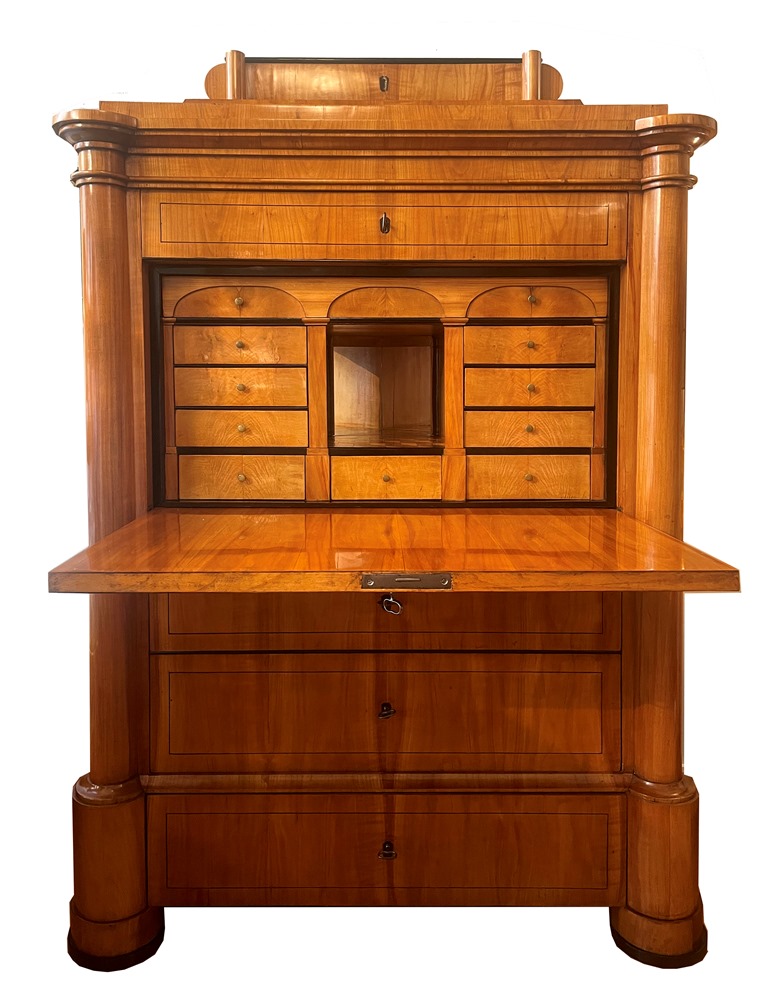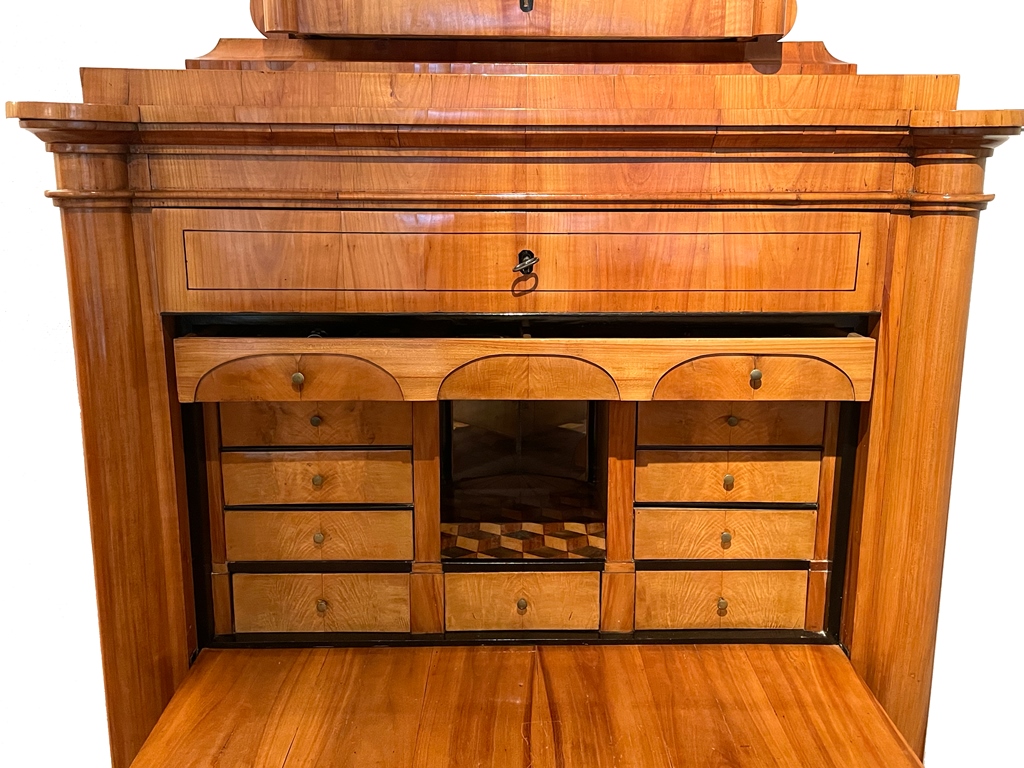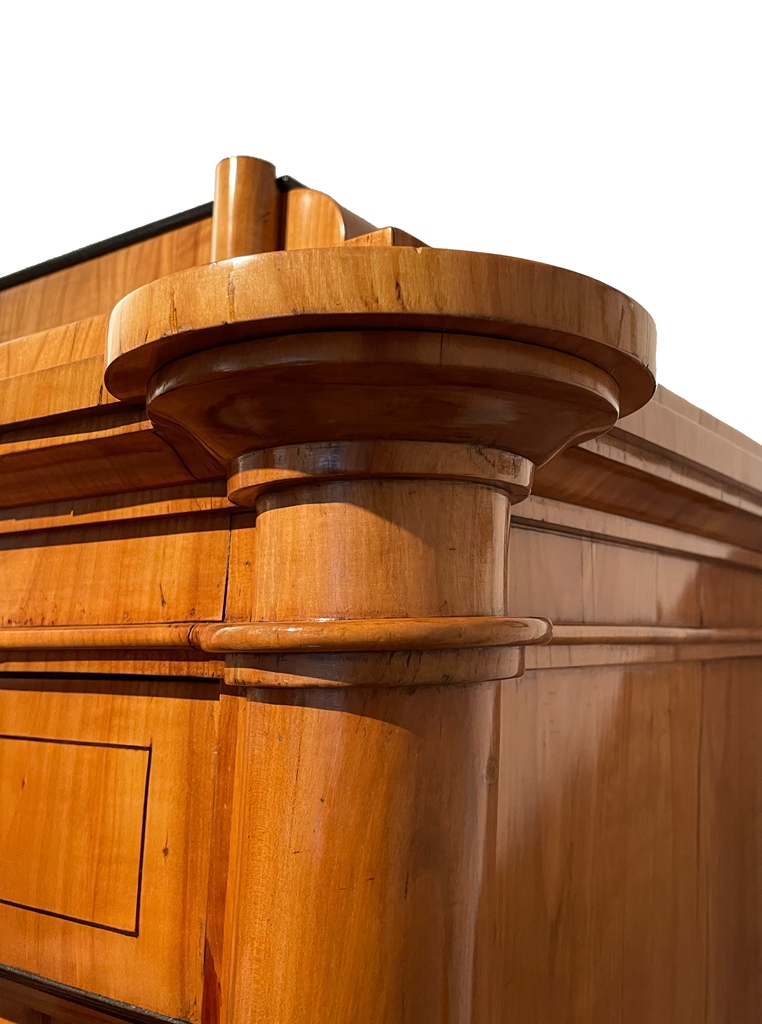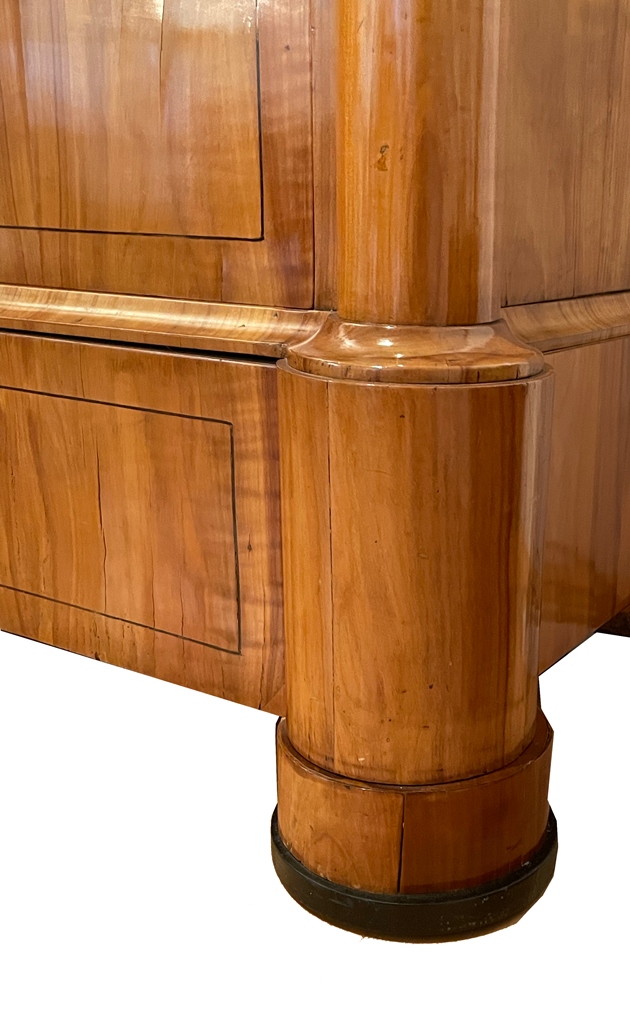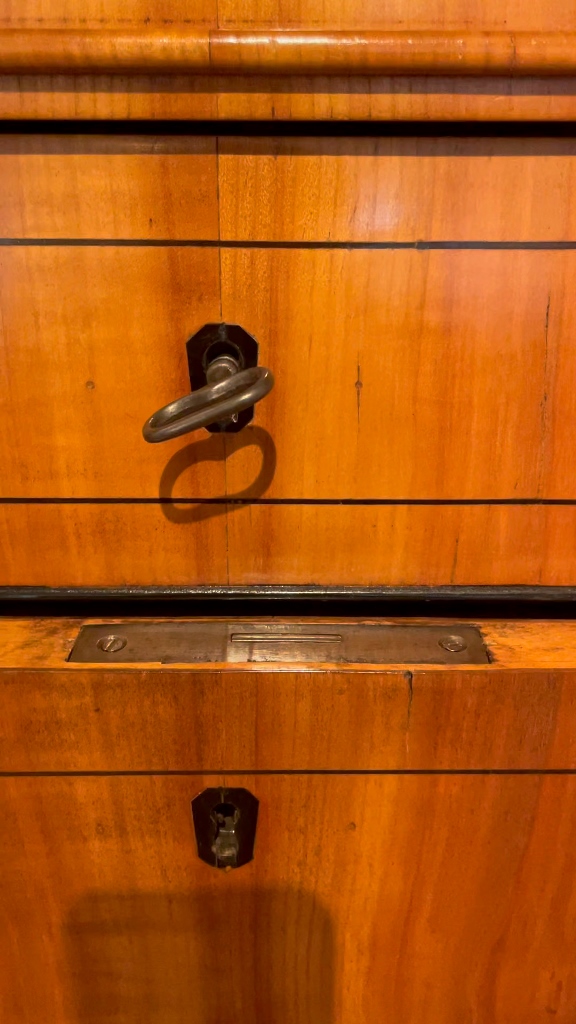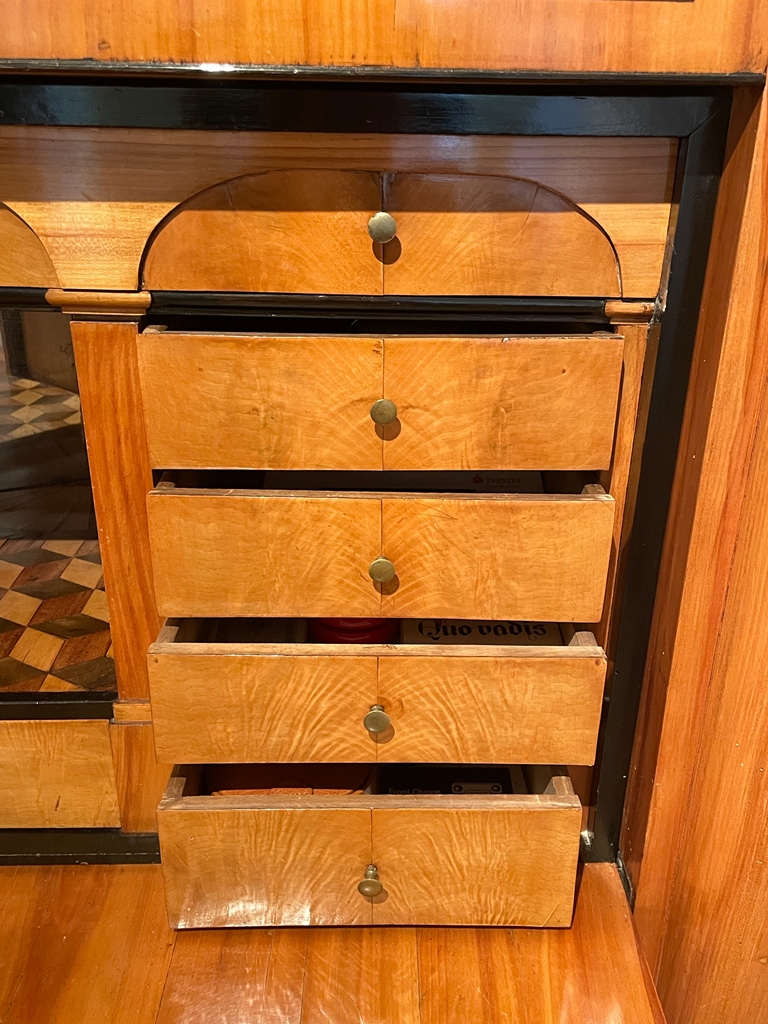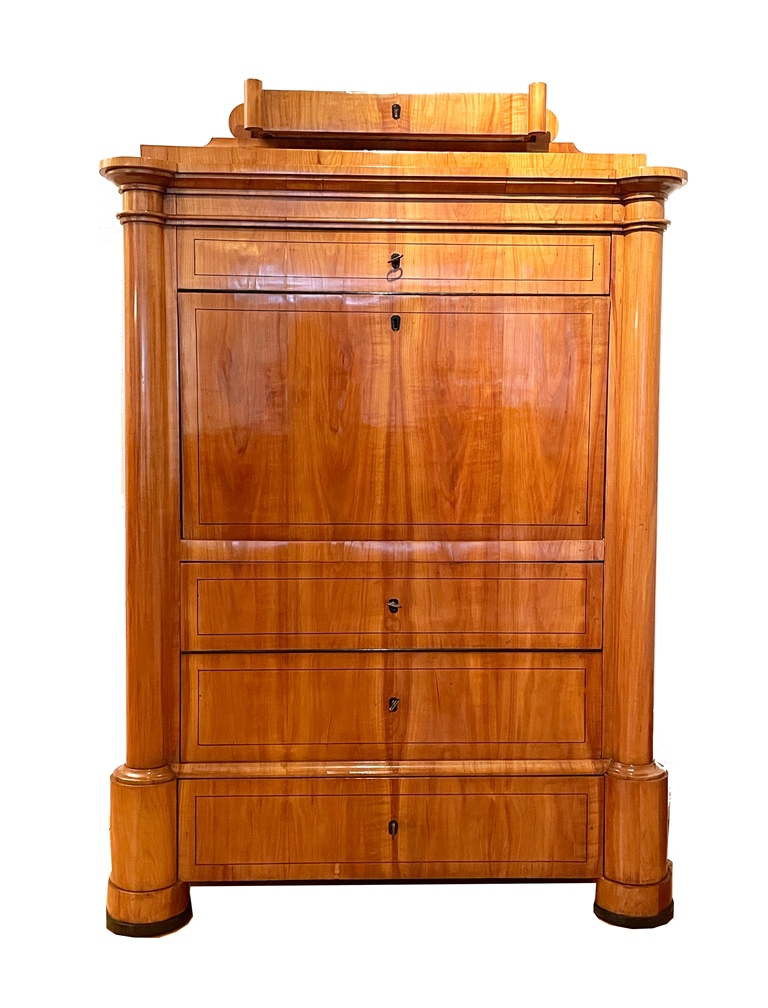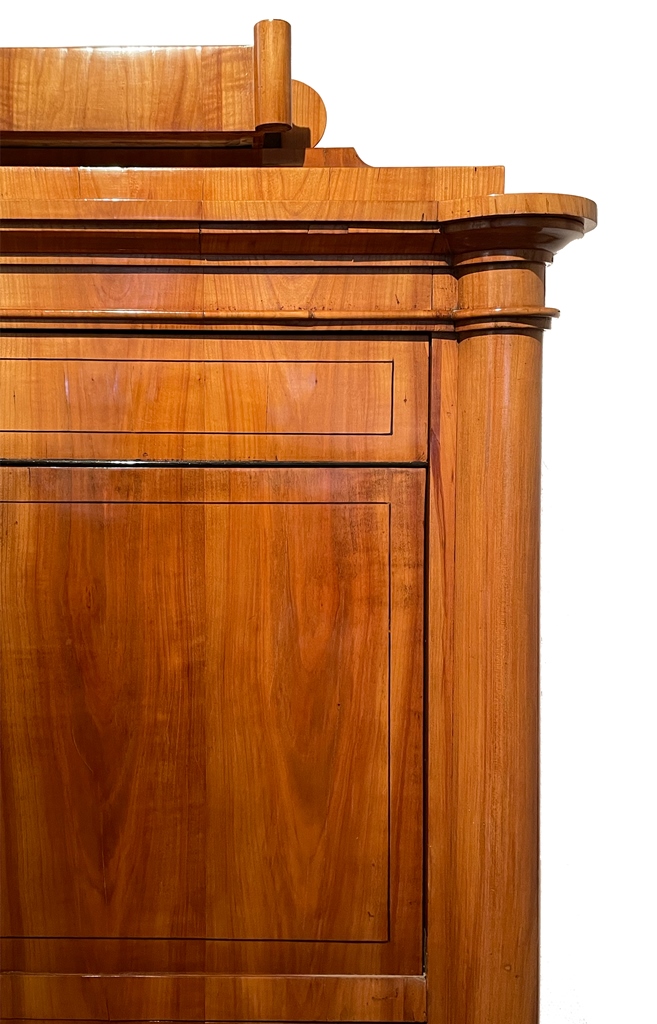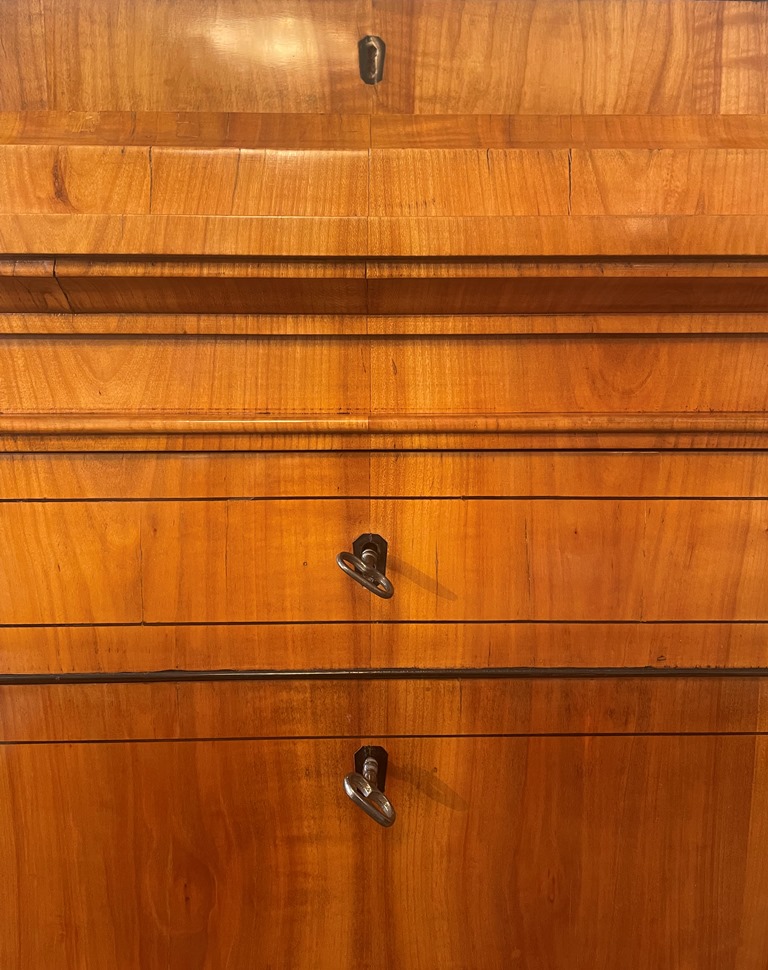Biedermeier secretary in cherry 1820, sold
Nr. 2154 |
Biedermeier secretary
masterful quality
Germany arround 1820.
Full-round columns flank the three-bay corpus with writing tablet and drawer above – in the top an additional drawer. Beautifully designed interior with checkerboard pattern and mirroring in original glass. Partially ebonized edges and key surrounds.
Height: 170 cm | Width: 116 cm | Depth: 55 / 92 cm
Biedermeier secretary
A Biedermeier secretary in cherry is a piece of furniture that was popular during the Biedermeier period. German art and cultural history from 1815 to 1848. It is a desk with many compartments and drawers, as a storage space for documents and writing materials.
… more to know
Typically, a Biedermeier secretary is made of solid wood, often in cherry, pear, or mahogany wood. Decorated with elegant details such as turned columns, carvings, or inlays. Writing surfaces of the secretary can be folded out to enlarge the workspace.
The Biedermeier secretary was a piece of furniture for the upper middle class. The nobility was used in private homes as well as in public buildings such as libraries and courtrooms. Today, Biedermeier secretaries are sought-after collector’s items and are often found in museums and antique shops.
Cherry wood
Cherry wood played a significant role in Biedermeier furniture, a style that emerged in Central Europe during the first half of the 19th century, particularly from the 1815-1848 period. Here are some key characteristics and aspects of cherry wood in Biedermeier furniture:
Warmth and Elegance:
Cherry wood was highly favored for its warm, reddish-brown color and elegant grain patterns. Its natural richness added a sense of sophistication to Biedermeier furniture.
Simplicity and Functionality:
Biedermeier furniture is known for its simple, clean lines and functional design. Cherry wood was a suitable choice for achieving this aesthetic, as it allowed for minimal ornamentation and a focus on form and function.
Veneering:
Cherry wood was often used for veneering, covering the surfaces of furniture with thin layers of cherry wood to create a smooth and uniform appearance. This technique was commonly applied to tabletops, drawer fronts, and other visible areas.
Technique and finish
Ebonized or Contrasting Details:
To accentuate the wood’s warm tones, ebonized or dark contrasting details were sometimes added to Biedermeier furniture. These details created visual interest and highlighted the wood’s natural beauty.
Lighter Finish:
Cherry wood was typically finished with a lighter stain or polish to enhance its natural color. This approach allowed the wood to shine and provided a pleasant contrast to the dark details or ebonized accents.
Geometric and Symmetrical Designs:
Biedermeier furniture often featured geometric shapes, symmetry, and clean, straight lines. Cherry wood’s versatility made it an excellent choice for crafting these precise and balanced forms.
Resurgence of Craftsmanship:
The Biedermeier era celebrated craftsmanship and quality, and cherry wood, with its workability and durability, allowed artisans to create finely detailed and well-constructed furniture pieces.
Adalbert Stifter
Adalbert Stifter, a representative of poetic realism, had the following to say about veneers:
“They are much more beautiful (the veneers) than approximate painting can convey. My brush still cannot express the shine, delicacy, and silkiness of the wood fibers” (Nachsommer, 1857). Stifter’s work is characterized by his pursuit of humanity, moderation. A sense of the quiet and unassuming, and a belief in the presence of a gentle law in nature.
Adalbert Stifter defines his idea of living as follows: “I would like to have an apartment with two large rooms, with well-polished floors where not a speck of dust lies. Softly green and pearl-gray walls adorned with new, solid, antique-style furniture, plain and glossy. Silken gray window curtains, drawn in small folds like frosted glass, to be pulled toward the center from the sides”
(April 24, 1834, Studies).
To give this piece of art a nice light to match made this Bouilotte would be perfect.
Biedermeier at RSA Wiesbaden
You can find a wide selection of Biedermeier furniture and decorative art pieces.
Regine Schmitz-Avila – your Biedermeier specialist for cabinets, tables, and chests.
